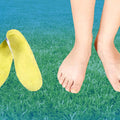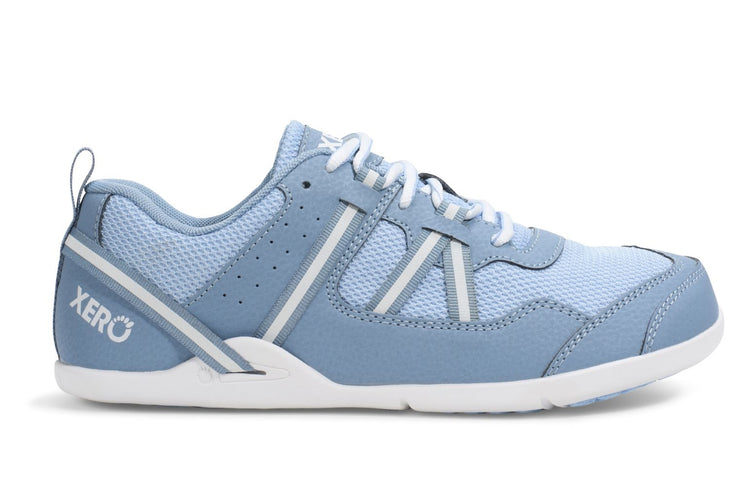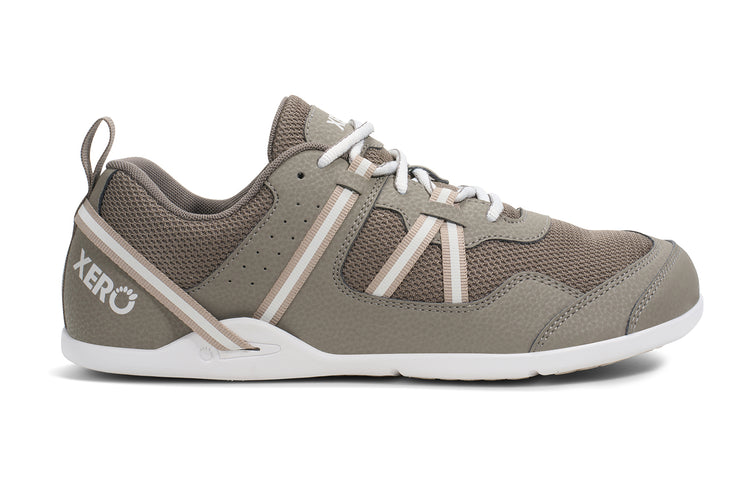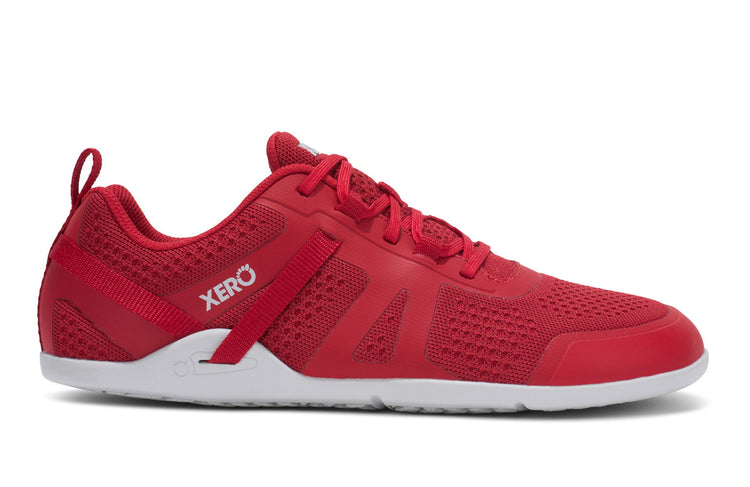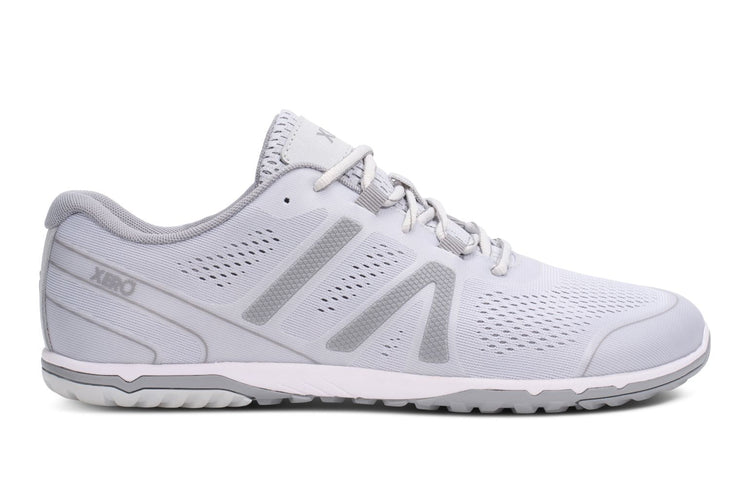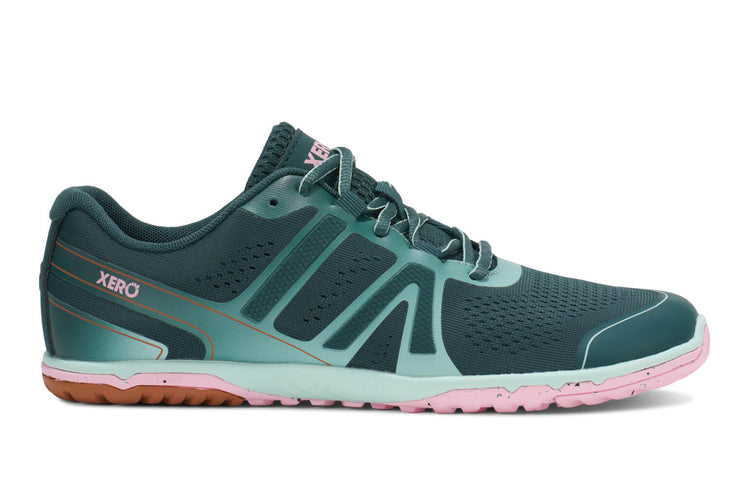The Xero Blog
Barefoot Running Sandals vs. Running Shoes
Orthotics vs. Barefoot Running
How to tie huaraches sandals - 3 new ideas!
latest News
Barefoot Running Sandals vs. Running Shoes
A barefoot running vs. running shoes "infographic" I'm get all geeky over well-presented information, and the graphic about barefoot running and regular running shoes from XRayTechnicianSchoools.net is a pleasure. Whenever someone says to me "Barefoot running can cause injuries" I remind them of the fact in 1/3 of the infographic: 90% (I heard 80%) of marathoners get injured each year. When people ask me about wearing barefoot running shoes in the winter, I remind them of that big squiggly time line showing that for hundreds of thousands of years, we would walk and run barefoot, without shoes, in some pretty cold places (in other words, your body, given time, will acclimate). And, I agree that being barefoot is not appropriate all the time... like when you want to get into a restaurant. Hence the value of our high-tech upgrade on the Tarahumara huarache-inspired shoes and sandals, where you still get a great barefoot feel, but can get into restaurants. I also got a great flashback from the 1974 timeline: I vividly remember getting my first pair of Nike Waffle Trainers. What's funny is that most people remember that it allowed you to land on your heel. I remember that it had such a large amount of "toe spring" (a curve up from the ball of your foot to your toes) that it kept me on my toes! (I was, and still am, a sprinter, so I don't spend much time running on my heels). AMAZING to see that barefoot running shoes are a $1.7 billion industry, in part because the market has grown MUCH faster than anyone imagined it would. But also because most of the barefoot running shoes are SO expensive. Minimalist shoes clearly doesn't mean minimalist prices, it seems ;-) And, of course, I agree about the best way to start barefoot running (there's no rush to make the transition out of running shoes and over to barefoot) Created by: X Ray Technician Schools The content of this post does not constitute and is not intended to be a substitute for professional medical advice, diagnosis or treatment. Always seek the advice of a physician or other qualified health provider with any questions or concerns you may have about your health or a medical condition.
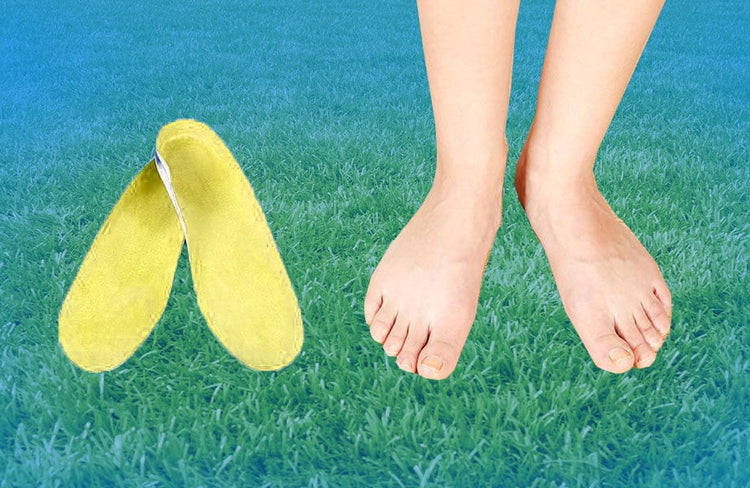
Orthotics vs. Barefoot Running
The only time I've worn anything other than my huaraches or my sprinting spikes in the last 16 months has been the 3 times I put on my old running shoes... so I could shovel snow. Those shoes have my $200 orthotics in them. And each time I've put them on, I have the same thought, "Geez, my foot can't even move. How did I wear these?" Often, when I'm out and about, someone will see my Xero Shoes and say, "Those look great, but I can't wear them. I need orthotics." "I used to think the same thing," I reply. "But let me ask you something. When has putting a cast on a limb and immobilizing it made it stronger?" "Well... never," they say, not wanting to admit the obvious fatal flaw in their reasoning. "Right. So you put a cast on your foot, called an orthotic, it gets weaker. Then you need a new cast to handle how much weaker you've gotten, and then... Oh, by the way," I mention, "you had your orthotic made while you were standing on a flat surface, didn't you?" "Yes." "Look at the shape of your shoe. Is it flat?" "Uh... no." "Because of how the shape of the shoe influences the way you move, you really need a different orthotic for each shoe. And it needs to be fitted based on how you move in that shoe, not how you stand, motionless, on the ground." "Hmmm..." I can see the glimmer of realization in their eyes. Well, now I have new ammunition in my anti-orthotic holster, an article in the New York Times by one of my favorite science writers, Gina Kolata: Close Look at Orthotics Raises a Welter of Doubts Let me give you a few highlights: Shoe inserts or orthotics may be helpful as a short-term solution, preventing injuries in some athletes. But it is not clear how to make inserts that work. The idea that they are supposed to correct mechanical-alignment problems does not hold up. Kinda sums it up, yes? Just wait, there's more. Gina interviews the top orthotics researcher, Benno M. Nigg, who says this about a man named Jason's flat feet: There is no need to “correct” a flat foot. All Jason needs to do is strengthen his foot and ankle muscles and then try running. without orthotics. Who knew? ;-) Well, *I* did... I've had really flat feet my whole life... until I started running and walking barefoot. Now I have some arch in my foot. BTW, I'm legally required to say that barefoot running shoes and sandals are not a medical treatment, I'm not a doctor, nor am I able to promise that by going without shoes you will develop arches in your feet. That said, do some Googling and you'll hear a lot of similar stories. Do with that what you will. Sometimes people with high arches give me the same story. "I need support because my arches are so high." Just because they're high, doesn't mean they're strong, especially if you've been supporting them all your life... remember the cast analogy. Now I'm not going to say that orthotics don't do something. But the question is: What do they do? How do they do it? And are they really helping? Dr. Joseph Hamill responds, in Gina's article: I guess the main thing to note is that, as biomechanists, we really do not know how orthotics work. Results from his studies cause Dr. Nigg to add: There was no way to predict the effect of a given orthotic. Hey, I'm not here to make anyone throw away their high-priced foot supports even though I haven't worn mine since 2009. But I am here to inspire a bit of wondering, a bit of curiosity, a bit of common sense, and a bit of critical thinking. Man lived without orthotics for a LOOOONG time. That doesn't mean they couldn't have benefited from them. But it means they got along without them. Maybe you can too. It doesn't cost much -- in time or dollars -- to set up an experiment for one. The content of this post does not constitute and is not intended to be a substitute for professional medical advice, diagnosis or treatment. Always seek the advice of a physician or other qualified health provider with any questions or concerns you may have about your health or a medical condition.
How to tie huaraches sandals - 3 new ideas!
There are so many ways to tie huaraches barefoot running sandals.I want to show you two cool pictures that'll probably give you more ideas of your own.First, Zach Bergen didn't want the knot between his toes (even though you'll probably never feel it, since it's in between your toes and flattens out pretty quickly). So with a bit of thinking, he came up with this solution:(notice the knot on the TOP side of the running sandal)Then, here are 2 stylish knots, one invented by my wife (and huaraches walker) Lena Phoenix, and the other invented by me when I couldn't remember what Lena invented ;-):For the first one, tie your huaraches the way you normally do. You'll have a loop pointing toward your toes (see Zach's picture, above). Then take the "leftover" lace and just repeatedly loop it around the toe loop (think about threading a needle, over and over).For the second one, just take the leftover and encircle the toe loop, over and over. The "trick" it to make each revolution below the previous one.I'll make a video with these if I have to (do I have to?).
Find the Shoe That Moves Like You Do.
Take the Quiz
Want to Win a $100 Xero Gift Certificate?
Click Here!We promise to only send you great Xero Shoes deals, information, inspiration, and FUN!
